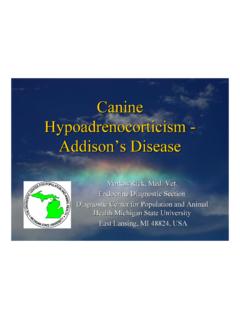Transcription of Social Phishing - Markus Jakobsson
1 Social Phishing Tom Jagatic, Nathaniel Johnson, Markus Jakobsson , and Filippo MenczerSchool of InformaticsIndiana University, BloomingtonDecember 12, 2005 Phishing is a form of Social engineering in which an attacker attempts to fraudulently acquiresensitive information from a victim by impersonating a trustworthy third party. Phishingattacks today typically employ generalized lures. For instance, a phisher misrepresentinghimself as a large banking corporation or popular on-line auction site will have a reasonableyield, despite knowing little to nothing about the recipient. In a study by Gartner [11],about 19% of all those surveyed reported havingclickedon a link in a Phishing email, and3% admitted to giving up financial or personal information. However, no existing studiesprovide us with a baseline success rate for individual Phishing attacks.
2 This was one of themotivating factors for the research project described is worth noting that phishers are getting smarter. Following trends in other online crimes,it is inevitable that future generations of Phishing attacks will incorporate greater elements ofcontextto become more effective and thus more dangerous for society. For instance, supposea phisher were able to induce an interruption of service to a frequently used resource, ,to cause a victim s password to be locked by generating excessive authentication phisher could then notify the victim of a security threat. Such a message may bewelcome or expected by the victim, who would then be easily induced into disclosing other forms of so-calledcontext awarephishing [12], an attacker would gain the trust ofvictims by obtaining information about their bidding history or shopping preferences (freelyavailable from eBay), their banking institutions (discoverable through their Web browserhistory, made available via cascading style sheets [13]), or their mothers maiden names(which can be inferred from data required by law to be public [8]).
3 Avi Rubin, a Professorof Computer Science at Johns Hopkins University, designed a class project for his graduatecourse,Security and Privacy in Computing, to demonstrate how a database can be built c ACM, 2005. This is a draft preprint posted by permission of ACM for personal use; not for redistri-bution. The final version of this paper will appear inCommunications of the facilitate identity theft [16]. The project focused on residents of Baltimore using dataobtained from public databases, Web sites, public records, and physical world informationthat can be captured on the that Phishing attacks take advantage of both technical and Social vulnerabilities, thereis a large number of different attacks; an excellent overview of the most commonly occurringattacks and countermeasures can be found in [5]. A more in-depth treatment also coveringattacks that do not yet exist in the wild will soon be available [14].
4 Here we discuss howphishing attacks can be honed by means of publicly available personal information fromsocial idea of using people s Social contacts to increase the power of an attackis analogous to the way in which the ILOVEYOU virus [3] used email address books topropagate itself. The question we ask here is how easily and how effectively a phisher canexploit Social network data found on the Internet to increase the yield of a Phishing answer, as it turns out, is:very easily and very study suggests thatInternet users may be over four times as likely to become victims if they are solicited bysomeone appearing to be a known mine information about relationships and common interests in a group or community,a phisher need only look at any one of a growing number of Social network sites, such asFriendster ( ), MySpace ( ), Facebook ( ), Orkut( ), and LinkedIn ( ).
5 All these sites identify circles of friends whichallow a phisher to harvest large amounts of reliable Social network information. The fact thatthe terms of service of these sites may disallow users from abusing their information for spam, Phishing and other illegal or unethical activities is of course irrelevant to those who wouldcreate fake and untraceable accounts for such malicious purposes. An even more accessiblesource, used by online blogging communities such as LiveJournal ( ), is theFriend of a Friend (FOAF) project [15], which provides a machine-readable semantic Webformat specification describing the links between people. Even if such sources of informationwere not so readily available, one could infer Social connections from mining Web contentand links [1].In the study described here we simply harvested freely available acquaintance data by crawl-ing Social network Web sites.
6 This way we quickly and easily built a database with tens ofthousands of relationships. This could be done using off-the-shelf crawling and parsing toolssuch as the Perl LWP library, accessible to anyone with introductory-level familiarity withWeb scripting. For the purposes of our study, we focused on a subset of targets affiliatedwith Indiana University by cross-correlating the data with IU s address book database. Thiswas done to guarantee that all subjects were students at Indiana University, which was partof the approval to perform experiments on human subjects; a real phisher would of coursenot perform such a weeding of Phishing experiment was performed at Indiana University in April 2005. We launchedan actual (but harmless) Phishing attack targeting college students aged 18 24 years were selected based upon the amount and quality of publicly available informationdisclosed about themselves; they were sampled to represent typical Phishing victims rather2 Table 1: Results of the Social network Phishing attack and control experiment.
7 An attackwas successful when the target clicked on the link in the emailandauthenticated with hisor her valid IU username and password to the simulated non-IU Phishing site. From a t-test,the difference is very significant (p<10 25).SuccessfulTargetedPercentage95% (9 23)%Social34948772%(68 76)%than typical students. Much care in the design of the experiment and considerable commu-nication and coordination with the University IT policy and security offices were requiredto ensure the experiment s success. The intent in performing such an experiment was toquantify, in an ethical manner, how reliable Social context would increase the success ofa Phishing attack. Standards involving federal regulations in human subject research andapplicable state and federal laws had to be taken into careful consideration. We workedclosely with the University Institutional Review Board in designing the protocols of thisunprecedented type of human subject illustrated in Figure 1, the experiment spoofed an email message between two friends,whom we will refer to recipient, Bob, was redirected to a phishingsite with a domain name clearly distinct from Indiana University; this site prompted himto enter his secure University credentials.
8 In a control group, subjects received the samemessage from an unknown fictitious person with a University email address. The design ofthe experiment allowed us to determine the success of an attack without truly collectingsensitive information. This was accomplished using University authentication services toverify the passwords of those targeted without storing these. Table 1 summarizes the resultsof the experiment. The relatively high success in the control group (16%) may perhaps bedue to subtle context associated with the fictitious sender s University email address and theUniversity domain name identified in the Phishing hyper-link. While a direct comparisoncannot be made to Gartner s estimate of 3% of targets falling victim to Phishing attacks, difference between the Social network group and the control group is Social network group s success rate (72%) was much higher than we had figure is, however, consistent with a study conducted among cadets of the West PointMilitary Academy.
9 Among 400 cadets, 80% were deceived into following an embedded linkregarding their grade report from a fictitious colonel [6].Some insight is offered by analyzing the temporal patterns of the simulated phisher site saccess logs. Figure 2A shows that the highest rate of response was in the first twelve hours,1 Two research protocols were written. The first protocol for mining the data was determined exemptfrom human subjects committee oversight. The second protocol for the Phishing experiment underwent fullcommittee review. A waiver of consent was required to conduct the Phishing attack. It was not possibleto brief the subjects beforehand that an experiment was being conducted without adversely affecting theoutcome. The human subjects committee approved a waiver of consent based on the Code of FederalRegulations (CFR) (d). A debriefing email explained the participants role in the experiment afterthe fact and directed them to our research Web site for further 1: Illustration of Phishing experiment: 1.
10 Blogging, Social network, and other publicdata is harvested; 2. data is correlated and stored in a relational database; 3. heuristics areused to craft spoofed email message by Eve as Alice to Bob (a friend); 4. message issent to Bob; 5. Bob follows the link contained within the email and is sent to an uncheckedredirect; 6. Bob is sent to ; 7. Bob is prompted for his Universitycredentials; 8. Bob s credentials are verified with the University authenticator; 9a. Bob issuccessfully phished; 9b. Bob is not phished in this session; he could try 70% of the successful authentications occurring in that time frame. This supports theimportance of rapidtakedown, the process of causing offending Phishing sites to becomenon-operative, whether by legal means (through the ISP of the Phishing site) or by meansof denial of service attacks both prominently used techniques.








